Affiliate links on Android Authority may earn us a commission. Learn more.
Should you pay Verizon $10 to add a second number or go for a cheaper alternative?
Published onMarch 9, 2024
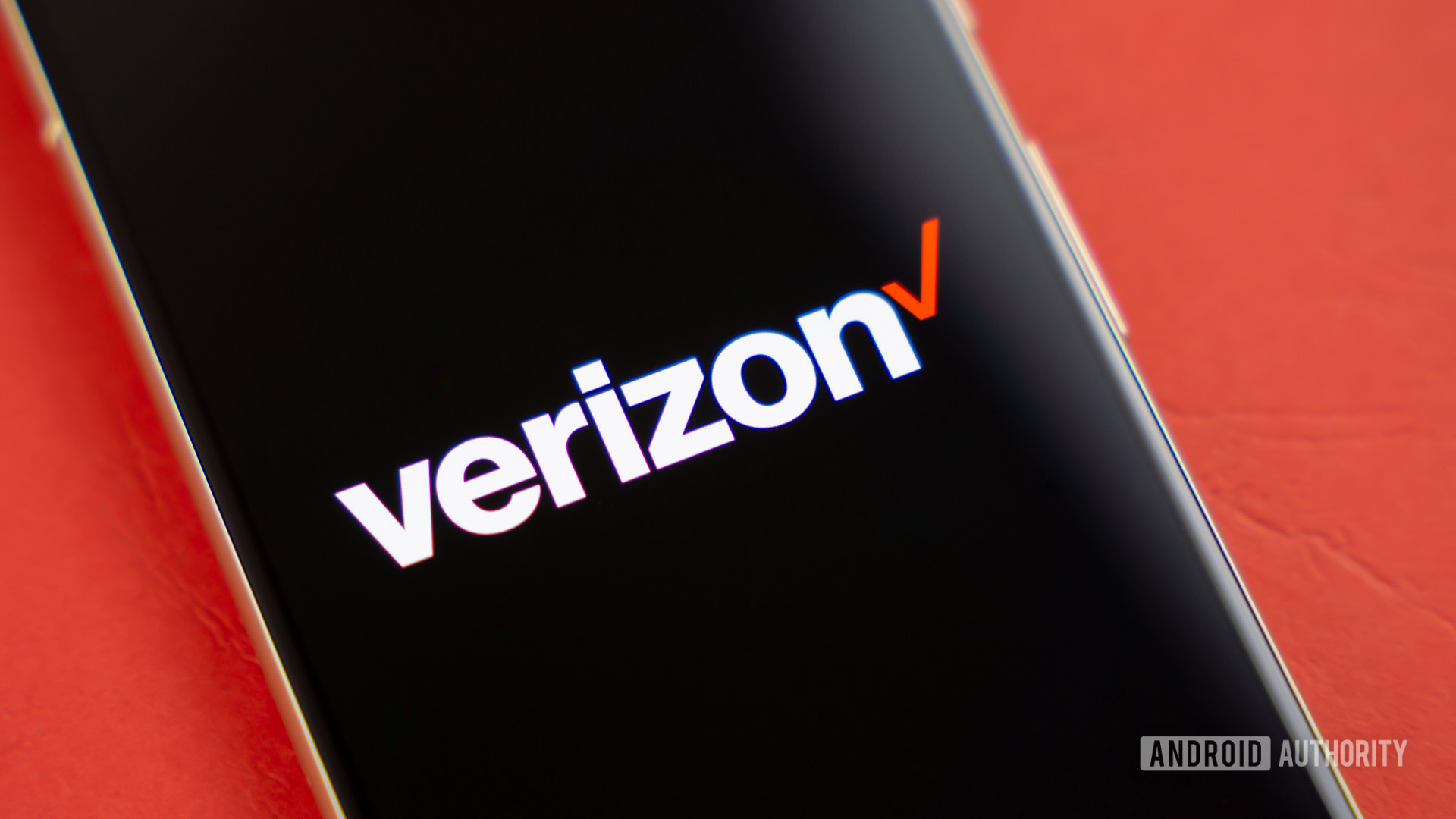
Verizon recently announced a new Second Number plan, letting customers add a second line to their existing Verizon phones. This might sound familiar as Verizon previously offered a similar feature called My Numbers that allowed up to four lines, but that offering ended in 2022. One big distinction is the older program used virtual numbers and required an app, whereas Verizon’s new plan uses your device’s eSIM and works just like a real number. Calls and texts will work with native messaging and phone calling apps, though data will be dependent on your main connection.
Verizon Second Plan isn't the cheapest, but it is a convenient way to add a second line.
Verizon says Second Number is aimed at those of us who want more privacy for our main line. This could be especially useful for anyone who needs a number for side hustles or online dating without giving out their main number. From now until June 5th you can sign up for the new plan and lock it in at a rate of $10 a month, whereas it goes up to $15 after that for new plan members. Is Second Number worth it when there are free and cheap alternatives out there? It depends on what you’re looking for.
Is Verizon’s Second Number worth it?

If cost is your main concern, there are plenty of cheaper alternatives to Verizon Second Number. The catch is that nearly all the free or dirt-cheap options use a special app for calls and texts. This won’t provide as stable or reliable of a connection as you’d get with Second Number. Of course, some of these apps have other advantages including support for multiple virtual numbers, cheap international calling rates, and more.
Below let’s take a look at five of the most popular second-number apps and how they compare to Verizon’s new plan at a glance:
| Cost | Unlimited Calling and Text | Multiple device support | Extra Features | |
|---|---|---|---|---|
Google Voice | Cost Free for personal (with permission to use data acquired) Starting at $16 for Business | Unlimited Calling and Text Yes for US, extra rates apply for international use | Multiple device support Yes | Extra Features Call forwarding, call routing, Voicemail transcriptions, Spam protection, Personal voicemail greetings, Google Cal/Meet integrations |
Sideline | Cost $15 a month $69.99 for 6 months $129.99 for a year | Unlimited Calling and Text Yes for US, international rates may apply for other regions | Multiple device support No | Extra Features Call forwarding, Auto-replay messges, voicemail, |
Cloud SIM | Cost Free calls/texts with other app users, rates vary for all calls to outside numbers | Unlimited Calling and Text Unlimited texts/calls to other Cloud SIM users, otherwise per rate charges apply | Multiple device support Yes | Extra Features Call forwarding |
Burner | Cost $4.99 for first month, $9.99 after | Unlimited Calling and Text Yes in the US/Canada | Multiple device support Yes | Extra Features Call forwarding, Auto-reply messages, tons of privacy features |
FreeTone Calls | Cost Free with ads ($7.49 Premium tier offers ad-free experience) | Unlimited Calling and Text Yes, free calls to US and Canada / additional rates apply for other regions | Multiple device support Yes | Extra Features Call forwarding |
Verizon Second Number | Cost $10 a month if you lock in rate by June, $15 after that | Unlimited Calling and Text No | Multiple device support No | Extra Features Call forwarding, native dialer/message app support |
As you can see, there are a lot of alternatives out there and that’s far from a comprehensive list. Many of these options will be cheaper than Verizon’s Second Number. There are also several eSIM options to choose from, which we’ll talk about a bit later. The real question is if Verizon’s Second Number is better, and the answer to this also varies depending on your use case.
If you just want a spare number to give out to others but don’t plan to use it much beyond receiving calls and texts, Cloud SIM is a free, minimalist, and ad-free experience. Unfortunately, it’s not great if you plan to use your number regularly as other options on this list could end up cheaper in the long run.
If you plan to use the number frequently but your main concern is value, I’d go with Google Voice. The trade-off is that you have to willingly give Google access to your data, which is not something everyone wants to do with private calls and texts. A very nice alternative for value-focused consumers is FreeTone Calls. Its ads are aggressive, but they don’t keyword-mine your conversations or texts, which is something Google is less clear about.
Verizon Second Number is going to be the easiest and most reliable method, but it comes at a premium.
If privacy or multiple-line support are the most important aspects, I’d go with Burner. Not only does it go out of its way to protect your data but it has tons of integrations for apps like Slack, Google apps, Evernote, and many more. The fact that Burner supports up to 200 temporary numbers and three main virtual numbers makes it even more impressive, perfect for those that freelance, run a small business, have side hustles, or just have an active dating life and don’t want to give out their main number.
Verizon Second Number makes a lot of sense for those who want the most reliable connection. Using eSIM ensures you won’t have sthe same problems you might with others on this list. For example, I have used Google Voice and Burner and, while they work well, sometimes calls just won’t go through or messages will never arrive. It’s rare, but it could still be a dealbreaker if you rely on your second number for important calls and texts. This won’t be an issue with Second Number or another eSIM plan. Will another eSIM plan work better? Probably not, but you could save a few bucks if you don’t mind the extra hoops you’ll have to cross versus the simplicity of signing up for Verizon Second Number.
TL;DR: Verizon Second Number isn’t necessarily a bad plan at $10 a month, but at $15 I feel it is a bit of a stretch. If you can lock in the introductory price, it might be worth it if you want the most convenient and reliable way to add a second line. Just be aware there are options with other advantages like lower costs, multiple virtual numbers, and higher security.
interested in Verizon’s Second Number plan? You can sign up directly through Verizon’s website. Of course, there are other subtle differences between the different second phone number apps. You can take a closer look at the best alternatives below.
Google Voice: The best second phone number app for most
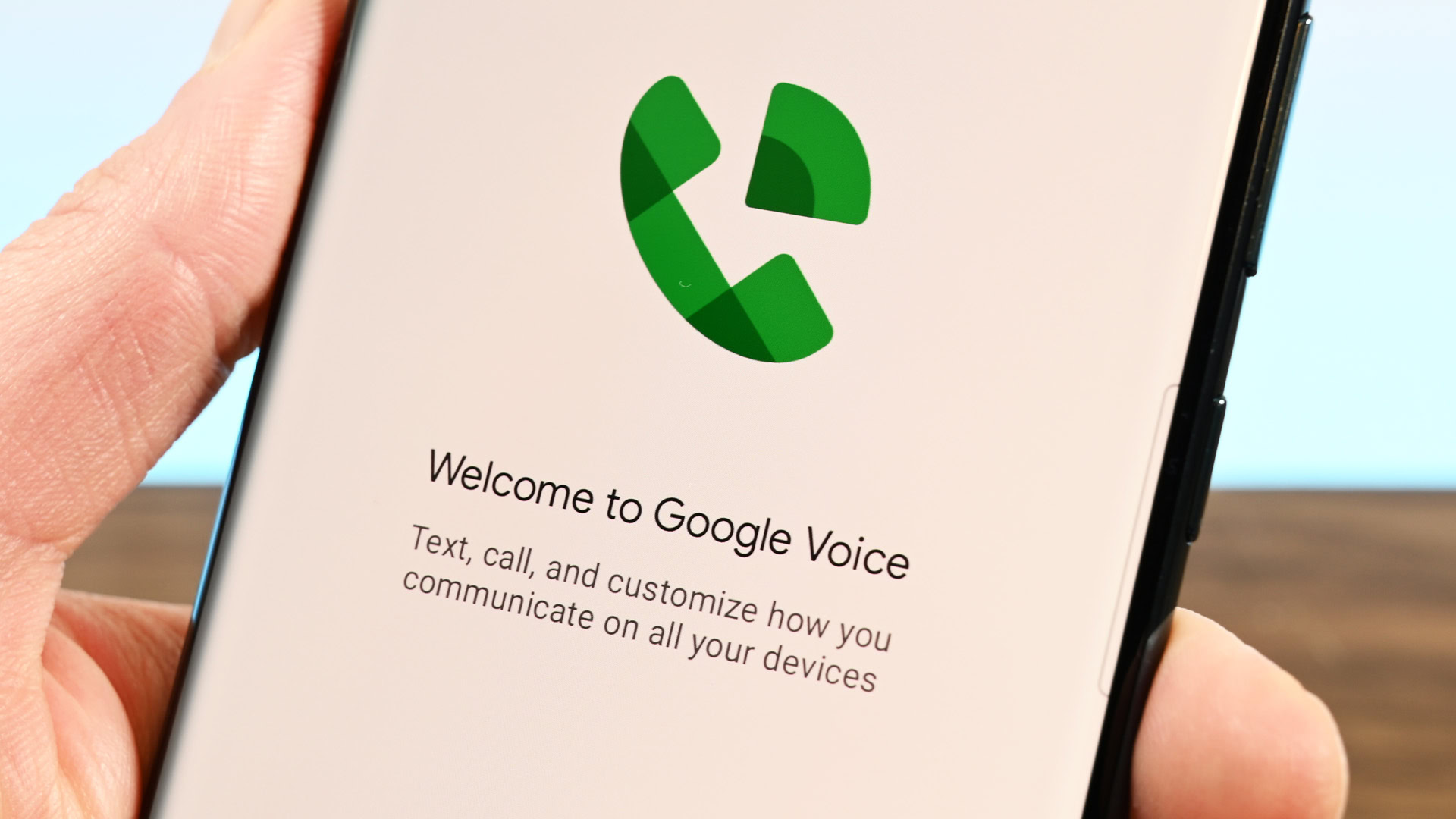
Pros:
- Can place calls through VOIP or directly through the carrier
- Free for US calls and texts, cheap international rates
- Web interface works great
Cons:
- Has ads and tracks your use to better target them
- Can pick up keywords with the microphone to target ads
- Limited to one line
Nearly every app on this list supports VOIP as its only method for placing calls. In short, the app routes your call through the web using the Voice Over Internet Protocol. This means you can use this second number on multiple devices including tablets and even computers. While Google Voice can work as a VOIP solution, it also has the advantage of being able to place calls directly through your carrier line. This method tends to be more stable, especially if your Wi-Fi or data connection is inconsistent like my Starlink.
Google Voice is truly the best of both worlds, and its free price makes it all the more impressive. Just be aware Verizon’s Second Number eSIM line is still going to be a bit more reliable, but this is a very close second. Of course, you must pay extra for international calls, vanity numbers, and other optional features. The only major downside to Google Voice is that it is probably the worst option in terms of privacy.
Google is in the ad business so it’s not surprising to know that this app is supported through ads, but be aware it’s not just limited to traditional targeting. While Google says it won’t listen or record conversations, this doesn’t preclude the ability of the microphone to pick up on keywords that Google can use to better advertise to you. If Google’s record for privacy and advertising concerns you, I would pick Verizon’s Second Number or another option on the list over this one.
You can learn more about Google Voice from their official website.
Sideline: An expensive yet reliable second phone number app
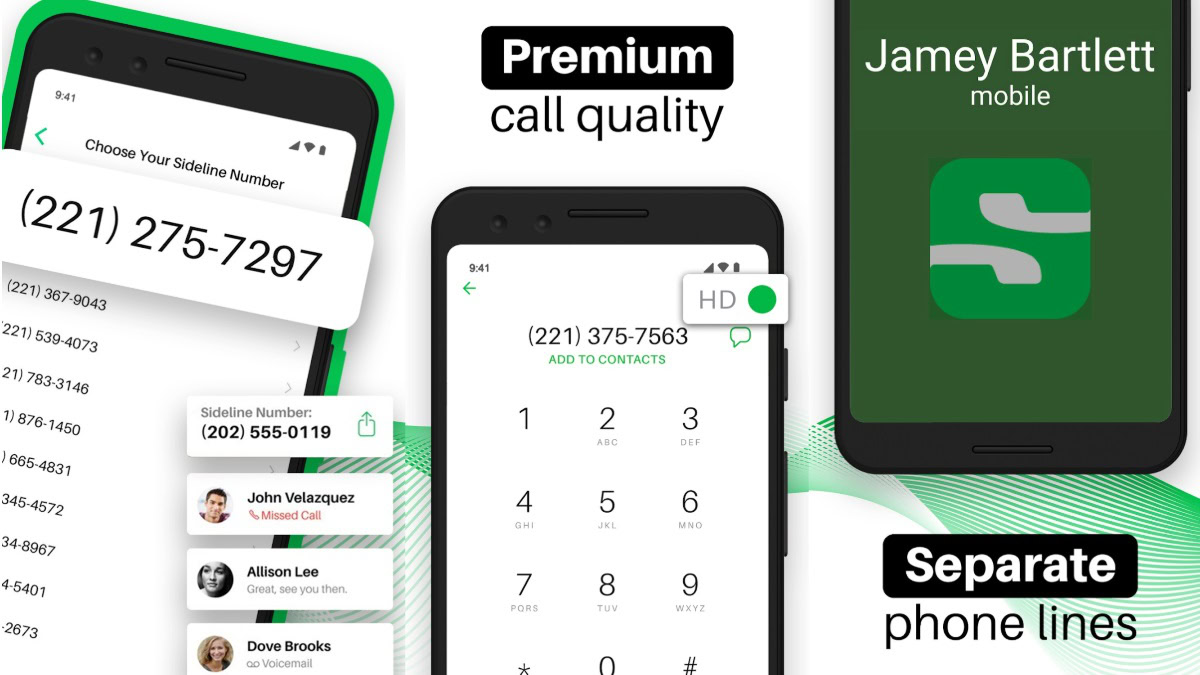
Pros:
- Reliable calls through the carrier’s signal
- Easy-to-use interface
Cons:
- No free option at all
- No VOIP calling to fall back on
- Expensive
- Only supports one line
Sideline works similarly to Google by placing calls directly through the carrier for the best call quality and stability. Unlike Google, it doesn’t have VOIP support, so the app can only be used on the phone that uses your main registered number. It’s also the most expensive option on the list, starting at around $15. This makes it similar to Verizon’s Second Phone plan once that goes up in price in June, so it’s probably not a great option if you’re a Verizon user.
Is there anything that makes this option better than Verizon considering the price similarities? Honestly, not really. While Sideline is a great option for non-Verizon users who want to place a call using the carrier’s signal over VOIP, Big Red uses eSIM technology so it’s going to offer even better call and text reliability and will cost you the same or less.
You can learn more about Sideline from their official website.
Cloud SIM: More like a chat app but with calling support
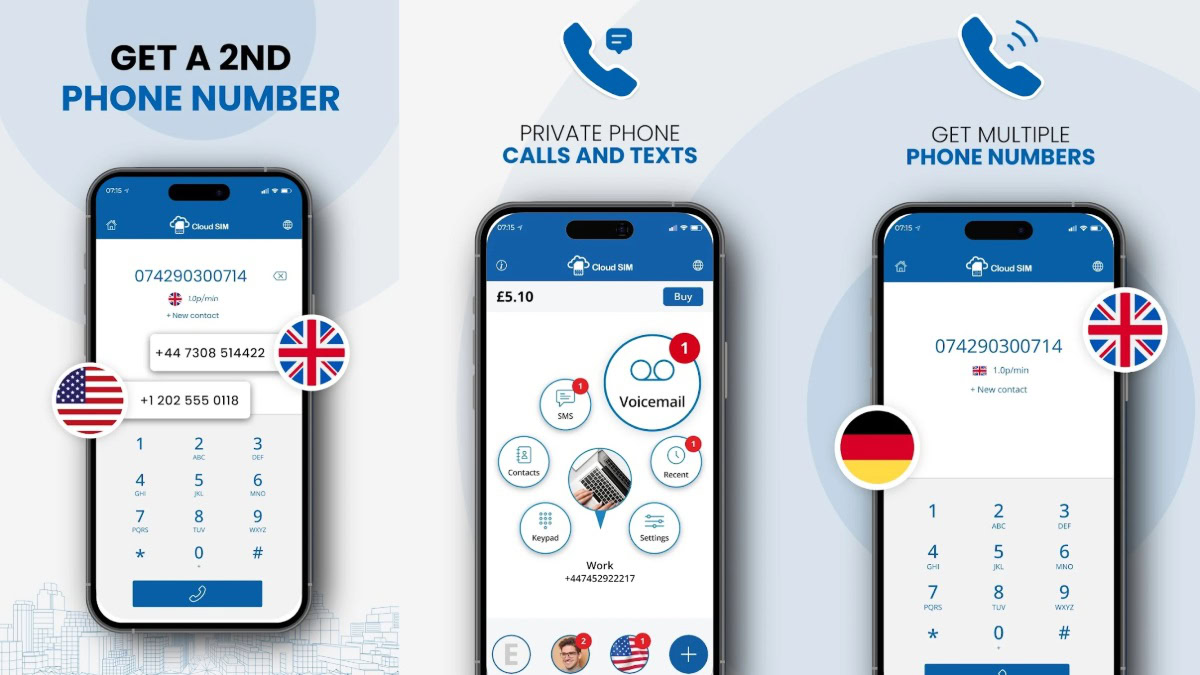
Pros:
- Free Cloud SIM text/calls
- Low-cost rates for outside calls
- Decent interface
- Up to four lines
Cons:
- Limited to US, Canada, UK, and Poland
- Calling non-Cloud SIM members is extra
Cloud SIM gives you a second number and is free, but only if you’re using it to call other Cloud SIM members. Texts and calls to other numbers cost one-time rates that vary depending on whether you’re calling within the US or internationally. While most of you reading this are likely based in North America, be aware this option only works in the US, Canada, UK, and Poland. On the bright side, it has a great interface that’s easy to use and feels more polished than many others on this list.
If you plan to use your second number to regularly make calls to those outside of the app, you’ll likely want to pass on Cloud SIM and go with Verizon Second Number, Google Voice, or another option on this list. If you only need to use the number on rare occasions, this is a free solution that doesn’t have the same level of privacy concerns as Google Voice.
You can learn more about Cloud SIM from their official website.
Burner: Extra emphasis on privacy
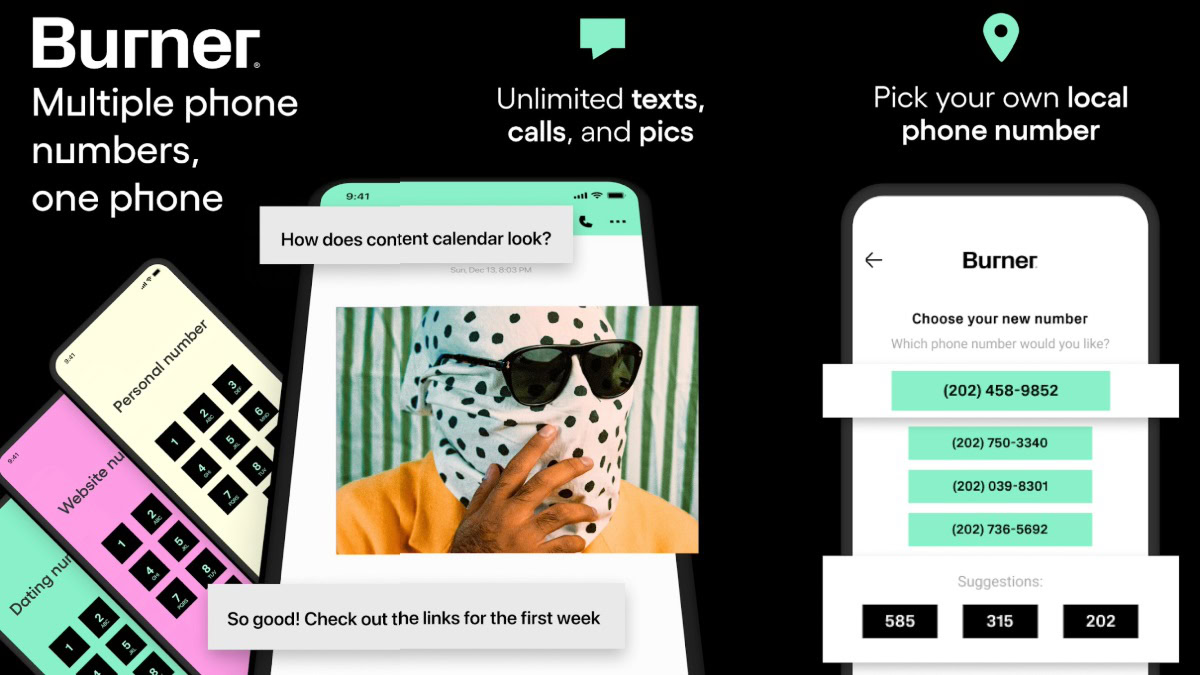
Pros:
- Support for up to 200 virtual lines
- Integration for Google apps, Slack, Evernote, and more
- Privacy focused features
Cons:
- Expensive and has no free option
Burner places extra emphasis on privacy, making it easier to protect your identity and ensure your data isn’t being shared with outside sources. In terms of features, Burner works similarly to the others on this list. You get unlimited calls and texts, can choose your own local number, there are blocking and auto-reply features, and even a spam blocker. At $10 a month, it’s priced the same as Verizon Second Line, but does it offer any advantages? Not really.
Burner is a good option with one of the best app designs in this category, but at $9.99 a month, you’ll likely find that Second Number is a better deal if you’re a Verizon subscriber.
You can learn more about Burner at their official website.
FreeTone Calls: The best free alternative to Google Voice
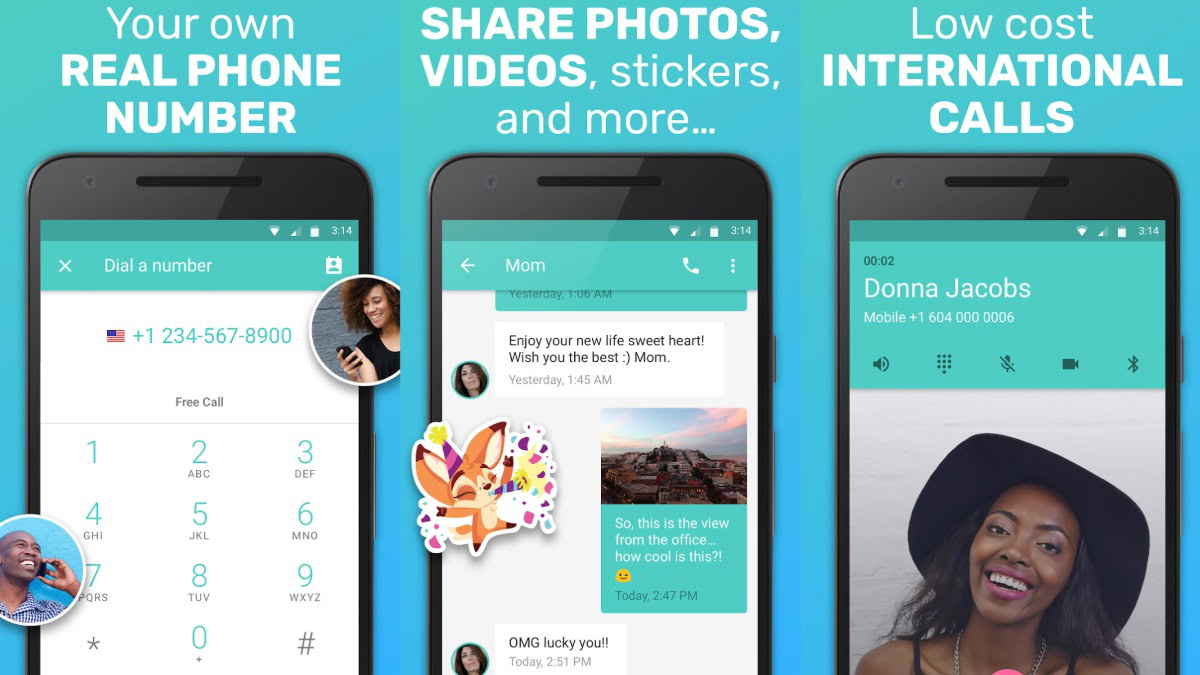
Pros:
- It has an easy-to-use app
- Offers an optional (premium) web app
Cons:
- No app syncing for messages/call logs
- Messages only go to the primary device
- The ads are fairly aggressive
FreeTone Calls is a free solution for local calls and texts, although it does use a credit system for international calls and texts. The service operates similarly to Google Voice, with the exception that it is limited to VOIP only. While this means you can technically use this service with multiple devices, it’s important to note that messages are only sent to your primary device and there’s no syncing of data such as call logs and messages.
It’s worth mentioning that ads are quite aggressive with FreeTone Calls. You’ll encounter inline ads during text conversations and throughout the entire user interface. However, it is possible to remove ads for just $0.99 cents a month, or $4.99 a year. If you can tolerate the ads or don’t mind paying to remove them, FreeTone Calls is a great alternative to Google Voice, offering fewer privacy concerns but more advertisements.
This is a better deal than Verizon Second Number, but you’ll have to decide how important reliability is to you. You can learn more about FreeTone Calls at their official website.
Don’t forget about other eSIM plans
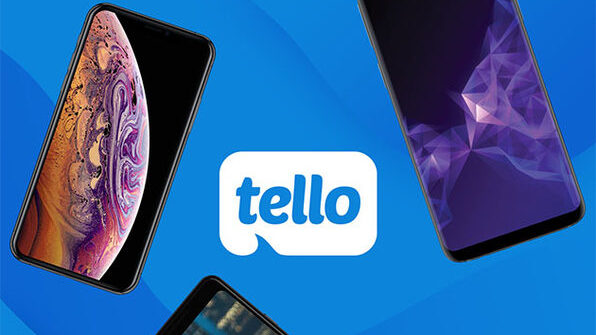
While most of the above options are cheaper than Verizon’s Second Number, the fact that Verizon uses eSIM technology means it will be the most reliable solution for those on the network. It’s also the easiest to set up and use since it’s just a matter of adding a plan and following Verizon’s instructions. You also can use your main dialer instead of a secondary app, which is a big plus.
If that sounds like an advantage worth the cost to you, slow down for a second! Another option would be to just add an eSIM or physical SIM plan from another carrier. There are tons of cheap options out there. For example, Tello has a talk and text plan with no data for just $8. You can choose a SIM card or use eSIM as well. While Verizon’s eSIM Second Phone plan is tied to your primary Verizon plan, Tello wouldn’t be. That means you could easily transfer it to another phone and have two devices if the need arises — something you can’t do with Verizon’s option.
For more prepaid options check out our guide to the best cheap cell phone plans.